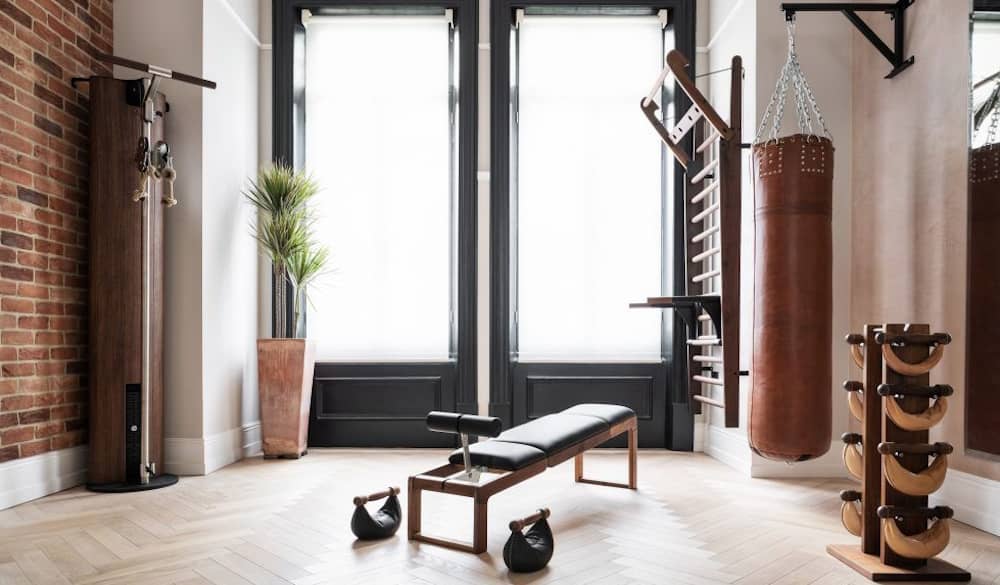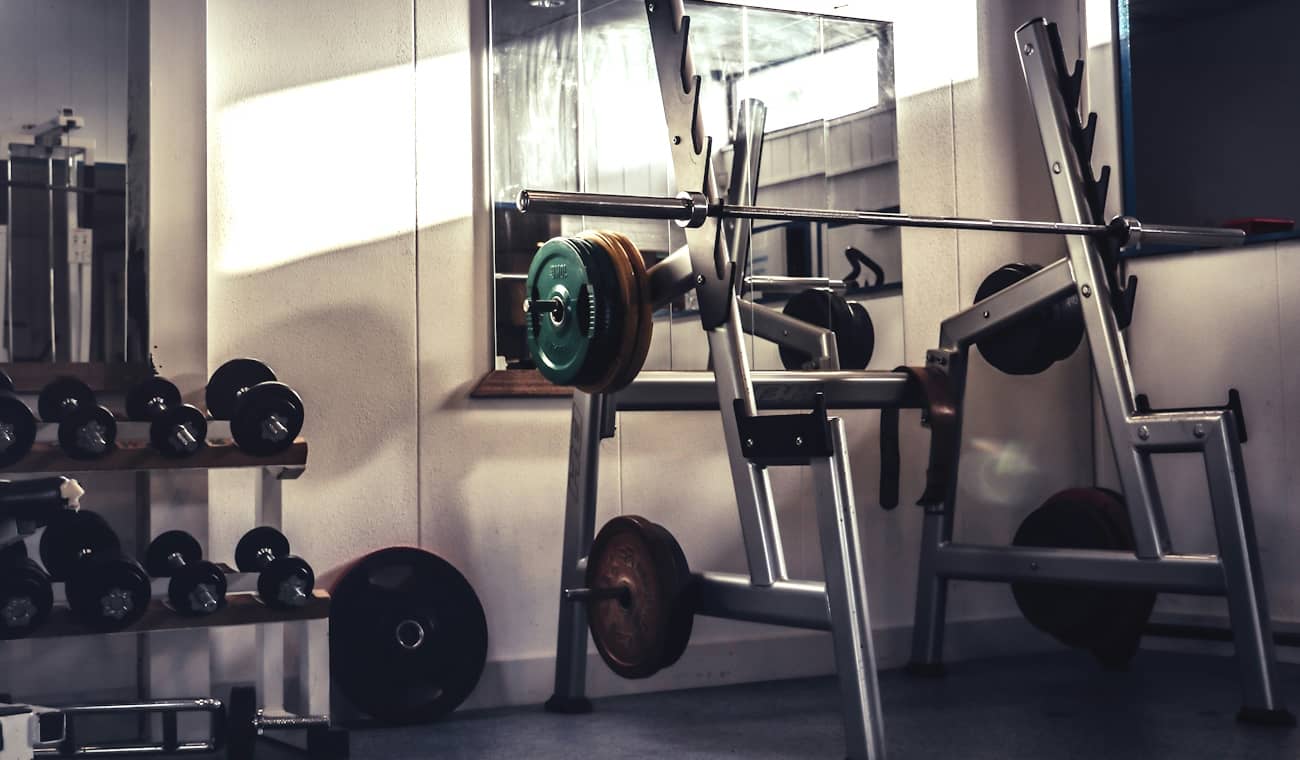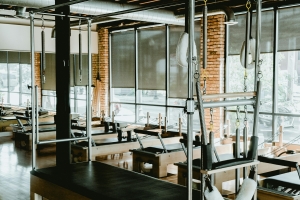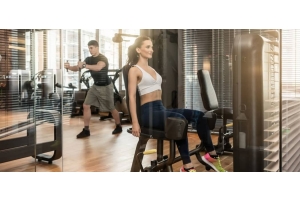How To Design A Home Gym Layout

Seriously thinking about working out at home? Learn how to design a home gym and layout with some simple advice. From the constraints of space and budget to the need to have a sufficient variety of equipment to make your workouts varied and effective.
Plan Wisely
Sounds simple, but most users assume what they do in the gym will work at home - wrong! How to design your home gym starts with three key things to get your head around, which will save you time and money in the long run.
-
What Do You Like Doing?
The best piece of advice we can offer you is to start by working out what you actually enjoy doing and what equipment you will use. If you don't enjoy it, you won't use it.
-
Practicality
What is practical in the space you have, and how to lay out the room? The water rower may look amazing, but will you use it enough to make it cost-effective? You may love a treadmill, but will it end up taking up too much space? So, consider what you need and the space that you have available.
-
Budget
If you know what you like and what space you have, then buying the right equipment need not be as expensive as you think. Call us on 01494 952182 if you need help with the home gym design or with the right equipment to suit your budget.

Design Layout Options
If you're buying a single cardio piece, then the following layout design advice may not apply, but if you want to look at strength equipment, re-purposing a room or enhancing a specific area to allow for gym workouts, there are some key areas you will need to consider.
-
Aesthetic
What look are you going for? If you actually don't care, as it's all about the equipment, then ignore. But, if you've decided on a look (black, wood, contemporary, industrial), then this will need to be thought about in the context of your design layout idea, as it will mean a certain type of layout and equipment choice.
For example, if your home already eschews the Scandi look, then wooden gym equipment for the cardio and strength side may well be what you prefer. However, you could make a statement and go completely the opposite, and put in a more industrial look.
-
Gym Flooring
The first physical thing you should look to sort out is your gym flooring. This is the absolute starting point for any new home gym. The wrong flooring and you could damage the floor, damage your equipment, annoy your neighbours thanks to the excessive noise or even injure yourself if you slip.
If you're only adding a bike to your living room or kitchen, then you can probably just make do with a proper protection mat. These are high-density, non-slip and easy to clean mats that sit under the equipment.
If you're looking at multiple pieces of gym equipment, as well as strength equipment which is heavy, then you need to first look at exactly what's underneath. Ideally, it's a concrete sub-base that's smooth and flat - but hey, that would be too easy. Whether it's a floating floor, wood on joists or concrete, you just need to understand the limitations of each type. Call us on 01494 952182 for some clear advice.
With a wide range of flooring, including 20mm, 30mm, and 40mm gym floor tiles, rubber rolls (requires glue) or luxury vinyl tiles (LVT), the type of flooring you choose is likely to depend on the workouts you'll be doing.
If working out with high impact and heavy weights, then you will need a good rubber floor.
-
Gym Mirrors
Gym mirrors may seem a bit of a luxury, especially when they are a few hundred pounds each, but they can actually completely transform your workout space and play a vital role with your form, your motivation to workout and the way you treat your new gym space.
From a workout perspective, gym mirrors are essential for you to keep a check on your form when you're working out. Whether you choose to have free weights, a cable machine or even a gym machine, watching how you hold yourself during an exercise will help you to keep the correct "form". This not only helps prevent injury, but it will also help you get stronger quicker. Mirrors also help you motivate yourself - nothing better than watching yourself workout and lift weights the right way.
Finally, from a home gym design perspective, the gym mirror is a clever way to not only make a small space appear larger, but it may also help to flood the room with natural light.
You can choose from smoked, bronzed or clear mirrors to suit your decor, and with GymEquipment.co.uk, our partners are a national mirror company that fits your Pilkington OptiMirrors to save you the hassle and time.
-
Get a Home Gym Layout Designed
We're not trying to drum up business here; we're trying to get you to see that you could be saving yourself a lot of time and hassle. Problems like equipment not fitting, no spare floor space, equipment the wrong way round, and other potential issues are common and may cost you money, or may leave damage as you try to 'make good'. You can do these layouts yourself - search for "gym design planner" online, and there are a number of free tools that will help you.
If you are just buying some weights, then you may not need to consider huge "design" issues. But if you are buying a number of different pieces of cardio or strength equipment, then you will need to carefully consider where everything goes. This will impact the weight on the floor, whether you need to fix it to the walls, which way round the equipment faces and making sure you have a space for floor and mat work.
Likewise, ceiling height, radiators in the room, entry and exit points, sockets for power, and light positions are all important things you need to think about. You don't want to spend the first few weeks of your new gym constantly moving everything around. Not to mention, strength equipment is very heavy and will do damage to the gym floor or even the subfloor if you keep moving it.
Don't forget to also consider things like swinging kettlebells in a small space or how you will store all your loose equipment. Do you have small children, which means all equipment needs to be safely stored away? Finally, consider lighting and music or even a TV, to remove the boredom or to motivate.
We're specialists in this area, and we know what will probably work and what may not. We can provide free home gym layout ideas as well as the final design and create a cost-effective quote for the equipment you want. Just use the button to contact us for more information or call 01494 952182.

Choosing Your Strength Equipment
Now you've worked through all the boring practical stuff (essential) you're left with the fun stuff - choosing the right gym equipment.
Starting with cardio and on to strength, we've provided a number of options for you below - but to be honest, anything is up for grabs - it's your gym!
-
Rack or Multigym (Strength)
Usually the 'centre piece' of a home gym, you need the width and depth spac,e along with enough height to fit one of these. But whether you choose a power rack or a functional trainer (DAP cable machine), this is usually designed to offer a variety of exercises and take the place of multiple pieces of equipment.
-
Barbells and Plate Sets (Strength)
For many, this is essential as it will allow you to perform a vast array of exercises. Covering all areas of the body from legs, back, shoulders, chest and arms. A key thing to remember is that, working from home, you won’t have a spotter. With this in mind, if you can afford it, then some bumper plates can be useful if you need to drop your weights, much kinder on a home floor. Another consideration here is to also purchase a rack, which allows for even more exercises, but again allows you greater safety when training alone.
-
A Solid Bench (Strength)
Again, it is a pretty fundamental piece of kit so that you can use your free weights (barbells and plates) as well as use it for dips, push-ups and more. We would advise buying a bench that has incline and decline options as this will allow for greater usage.
-
Free Weights (Strength)
The simplest option for free weights is probably dumbbells – with just a couple of different weights of dumbbells, or some adjustable dumbbells with a variety of plates, you can perform a huge range of exercises for the whole body. Dumbbells are particularly effective because you have to work both sides of the body independently, so you will soon uncover – and rehabilitate – any weaknesses.
If you have a little more space, you can use an Olympic bar, which allows you to work with much heavier weights.
-
Functional Equipment (Strength)
Slam balls, med balls, kettlebells, plyo boxes and more. Functional equipment is anything that can help you get fit in a way that will help with everyday tasks. Think CrossFit or HYROX-type exercises, or the old-school circuit classes you used to do. This sort of equipment can be bought in different weights to suit your strength and level of fitness, and is usually quite cheap, so you can start small and then build your collection.
Think About Cardio Equipment
Most people who are planning a home gym design layout start by choosing their ideal piece of cardio equipment. Cardio equipment tends to be the biggest, most expensive part of a home gym, and therefore requires serious thought and planning.
There are six different cardio machines that you will probably end up considering. They each have their own merits, including total body workouts, upper or lower body workout-centric. But they are not all the same. Think height clearance for treads, cross trainers or stair climbers for starters.
-
Treadmills
Complete range available from folding through to commercial and fully connected with very large HD screens. Self-powered and curved treadmills are gaining in popularity, not least because they offer 30% more calorie burn, they last longer, and they don't need a power source. Check for simple things like step height, overall height with incline at max and of course the length (plus a sensible run off area behind ~ 1.5 - 2m).
-
Cross Trainers
Again, the height issue once you are using. They do tend to take up much larger areas than traditional cardio, up to 2.4m in length for some. There are compact options, including the Technogym Elliptical. Choose between basic consoles or HD Interactive screens, then look at the features, including heart rate monitoring, stride length adjustments and moving arms.
-
Exercise Bikes (Including Studio Bikes)
An array of options, including upright, recumbent, studio bikes and the CrossFit favourite - the air bike. Each offers a slightly different way to get cardio fit, but the most popular remains the upright and studio bike (aka spinning bike).
-
Ski Ergs
A firm favourite for CrossFit and HYROX, this ski machine is harder than it looks, especially if you think you want to build your cardio. With proper form, you will get a good all-over body workout, especially in those hamstrings.
-
Rowing Machines
Low impact, total body workout that offers a huge amount of workout for the time you spend on it! From the waterrowers we feature through to air resistance from the Concept 2 or Hlaf Human rowing machines, they offer great value for money, and if you need, can be stored upright to save space.
-
Stair Climbers
Classic gym cardio piece, now increasingly popular in homes with a good ceiling height. The range of different options available offers a superb low-impact workout that covers your legs and core. You choose the intensity and the time, and start climbing.
In Summary
There are a range of things you should think out when designing a gym in your home, from the layout through to using inspiring gym designs you can find. Ultimately though, unless you are doing it as a folly, you are going to be using this gym 4 or 5 times a week and you will want to have the right balance of atmosphere and motivation.
Quite simply what do you most enjoy using for a workout? Of course, you may be seriously constrained by price or space and if space is your issue, look for space-saving dimensions or models that can fold or stand vertically when not in use. Don't under-estimate functional equipment that is cheap and incredibly versatile. The internet has so many videos and apps that can help you workout - just type in terms like "how can I work my legs with a kettlebell" or "what exercise will work my biceps". Cheap and taking up little room includes skipping ropes, exercise bands and even an exercise ball or a BOSU.






